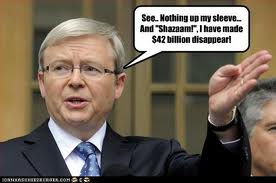 Last week I read a great blog post from Meredith Hilt titled “Driving Me Crazy: Canned Goods for Cash“. She laid out three great reasons to give cash instead of canned goods. I was totally convinced, and the most effective argument for me was that food networks can buy food in bulk which makes the dollar you use to buy a can of green beans stretch much farther.
Last week I read a great blog post from Meredith Hilt titled “Driving Me Crazy: Canned Goods for Cash“. She laid out three great reasons to give cash instead of canned goods. I was totally convinced, and the most effective argument for me was that food networks can buy food in bulk which makes the dollar you use to buy a can of green beans stretch much farther.
So, yesterday I was driving to Dallas to spend Thanksgiving with my in-laws, and I was listening to NPR’s “Talk of the Nation”. One of the stories was exactly the same topic as Meredith Hilt’s post. As the miles passed, Neal Conan asked all the right questions of all the right guests. I was starting to tune out until Neal opened the phone lines and a caller surprised me by saying something like this:
I like to donate canned foods instead of a check because I know the non-profit organization cannot use my food donation to pay for overhead costs like staff salaries.
Well, I am happy to report that I kept my car on the road and arrived in Dallas safely many hours later. I am also happy to share with you that the next caller responded beautifully. She pointed out that overhead is necessary to pay the people to distribute the food, pay the utility company to heat and cool the area where the food is stored, and pay for the insurance on the building. Well done!
However, my mind has fixated on this exchange of thoughts, and I’ve come to the conclusion that people don’t trust non-profit organizations the same way they did before. Additionally, trust in the non-profit sector feels like it is eroding more and more every year.
I suspect part of the trust-gap is directly related to executive salaries. I only say this because it is usually the first thing out of people’s mouths.
I suspect that as long as unemployment remains high, people will question how and why non-profit boards can justify paying their executive director what might be perceived as a substantial salary. This is an emotional argument on the part of most people. I say this because if they looked at how large many of these agency budgets have grown, then an executive salary between $70,000 and $120,000 doesn’t look so inflated. Of course, when the average household in America is earning approximately $45,000/year and they’re working harder and harder for less and less, these arguments tend to fall short.
For those donors who are freaked out and afraid of non-profit organizations with high overhead, I think we have an obligation (in all circumstances and even in passing conversations) to educate the public about resources like Guidestar and Charity Navigator. These sites are far from perfect, but they are the only resources that exist to help skeptical donors feel like they are getting impartial information to help them make smart charitable investment decisions.
Personally, I wouldn’t stop here as I outlined in my blog post “Nothing Up My Sleeve! What About Yours?” a few weeks ago.
How does your agency deal with the “overhead question”? What about the question of executive compensation and defusing the issue with ‘average Joe’ donors? What are your thoughts about third-party accountability websites? Please take a moment to weigh-in with your thoughts on this Thanksgiving-get-away-day. We can all learn from each other.
Here is to your health!
Erik Anderson
Founder & President, The Healthy Non-Profit LLC
www.thehealthynonprofit.com
erik@thehealthynonprofit.com
http://twitter.com/#!/eanderson847
http://www.facebook.com/eanderson847
http://www.linkedin.com/in/erikanderson847





















